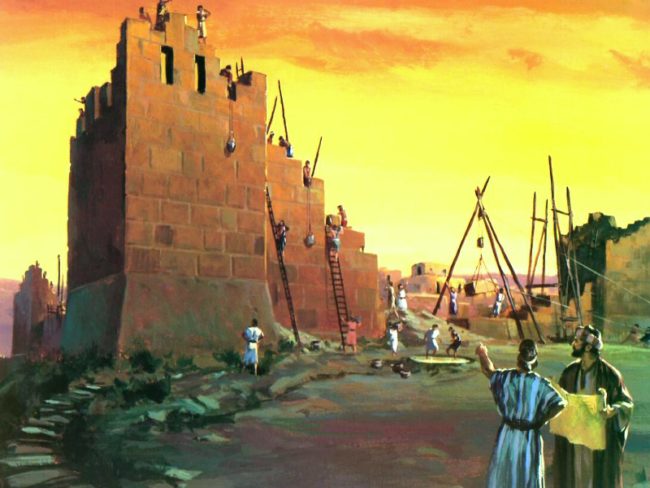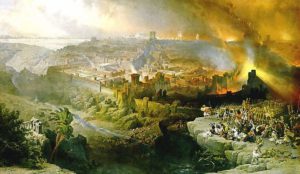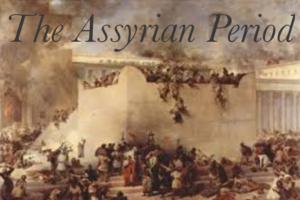After a short break from the series, we are ready to pick the story back up. Lesson 11 ended with Jews being taken into Babylonian exile for breaking the covenant God made with Israel on Mt. Sinai. While prophets like Jeremiah warned about Babylon ahead of time, he and other faithful prophets also foretold of restoration to come after the exile (Isaiah 9:1-7; 10:20-23; Ch. 11; Ch. 35; Jeremiah 23:1-8; 24:1-10; Ch. 25; Ch. 30-33; Ezekiel 37; Daniel 9:20-27; Hosea 1:10-11, Amos 9:11-15; Obadiah v. 17-21; Micah 2:12-13; Nahum 2:2; Zephaniah 3:8-20, and others). This is where Persia comes in to play. Follow along as the covenant story that began in Genesis starts to wind down.
Introducing the Persian Period
In the year 539 B.C., Cyrus the Great overthrew Babylon and took the stage of world power just as Isaiah said would happen (45:1). The Medo-Persian Empire dominated the biblical world for the next 200 years. King Cyrus and his successors were pronouncedly more friendly to their captors than the previous beasts: Assyria and Babylon. Whereas the previous empires transplanted captive inhabitants far from their homelands, the Persians would return the people to their native soil with assistance for rebuilding and restoring the land (Waltke). This replanting was energized by politics; nonetheless, Israel was primed to be restored just as the prophets said would happen…or so it would seem.
What You Need to Know– The Persian Period can be difficult for most beginning Bible students, because this time period is scattered all over the Old Testament as organized in the modern English Bible. Ezra, Nehemiah, and Esther stand right in the middle of the Old Testament and provide a historical narrative of the time period. Then, you have to wait till the very end of the English Bible to get the rest of the story as it is revealed by Haggai, Zechariah, and Malachi in prophetic literature. Even with this awareness, it is difficult to keep track of all the events in between. Here is brief outline of important events during this period.
1st Return- Zerubbabel, 538 – 537 B.C., Rebuild the Temple
2nd Return- Ezra, 458 B.C., National Cleansing & Reform
3rd Return- Nehemiah, 444 B.C., Rebuild the Temple & Further Reform
Zechariah and Haggai prophesied a couple months apart in approximately 520 B.C. and were contemporary with Ezra. These two prophets scolded the Jews who had returned to Jerusalem, for they had become apathetic in rebuilding the temple under the initiative of Zerubbabel. Their preaching seems to have been effective as the temple was finally finished in 516 B.C. This was a glorious occasion as God’s dwelling place had been restored after almost 100 years of being in ashes. Haggai, by inspiration, realized the significance of this event when he spoke on God’s behalf saying, “‘I will fill this temple with glory… The glory of this latter temple shall be greater than the former,’ says the Lord of hosts. ‘And in this place I will give peace.'” Some scholars believe this would be better rendered, “The final glory of this latter temple shall be greater than its initial glory,” (Lewis). This seems to be more in line with the intended meaning, as the temple was really a preparatory symbol of God coming in the flesh to dwell with His people. The final glory that Haggai visualizes is realized when Jesus steps foot in the temple and says these words, “Destroy this temple, and in three days I will raise it up,” (John 2:19).
Connecting the Dots– The temple pointed to Jesus (God dwelling in the flesh with His people). What does this mean about the Persian Period then? The prophets said that Israel and Judah would be restored. It would seem that in the days of Zerubbabel, Haggai, Zechariah, Ezra, and Nehemiah that these prophecies were realized. No. The Jews physically returned to the land, they physically rebuilt the temple, and while they started the process of spiritual reform, it fell short. Malachi, the last of the writing prophets, leaves the period on this note, “Judah has dealt treacherously…for Judah has profaned the Lord’s holy institution which He loves…” (2:11). Physical restoration was the first phase of restoration , but spiritual restoration was the final phase, and Judah did not achieve this despite the valiant efforts of Ezra and others. It would take a prophet like Elijah (see John the Baptist) preparing the way for the Lion of the tribe of Judah (see Jesus Christ) for the restoration to reach completion. Christ did indeed restore a nation, a spiritual nation (1 Peter 2:4-10), and He did this while the physical nation idly watched on.
Conclusion
This concludes the Persian Period. Israel is back in the land, but God has not yet come. The stage is set, but 300+ silent years stand between this biblical period and the curtain being pulled back on Jesus Christ. There will be one more Five Minute Bible Study to wrap up this series What You Need to Know About the Old Testament. Stay peeled for Lesson 13.
Helpful Resources– 1) An Old Testament Biblical Theology by Bruce Waltke 2) The Minor Prophets by Jack Lewis




Comments
what caused the downfall of persia despite dealt rightfully with jews
Author
This paragraph is taken from a National Geographic article on the Persian Empire.
“The Persian Empire began to decline under the reign of Darius’s son, Xerxes. Xerxes depleted the royal treasury with an unsuccessful campaign to invade Greece and continued with irresponsible spending upon returning home. Persia was eventually conquered by Alexander the Great in 334 B.C.E.” (https://education.nationalgeographic.org/resource/persian-empire/)
These two paragraphs were taken from a very helpful article on a site called “Timeless Myth.” I would recommend reading the whole article for more insight into the answer to your question.
“During the downfall of Persian Empire, the emperors were unsuccessful at ever molding the many subject nations into a whole; the creation of a national identity was never attempted. Any such intentions were hindered by the stringent economic conditions and the wide cultural gap. This lack of cohesion eventually affected the military’s efficiency.
The empire also lacked a strong ruler after the demise of Xerxes I (486-465 BC). This, along with the lack of national identity, led to much internal commotion. Many of these were fought for supremacy and notorious satrap’s revolts which worsened the condition of the Persian state and catalyzed the fall of the Persian Empire.” (https://www.timelessmyths.com/history/why-did-the-persian-empire-fall/)